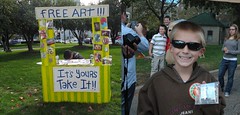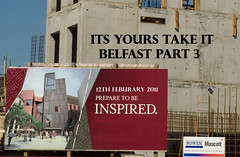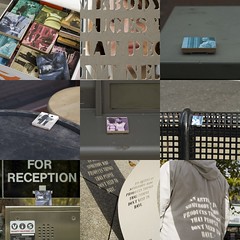Co-existence and Representation of Cultural memory and Individual memory
Mieke Bal invites us to,
" the discourse of cultural memory to mediate and modify difficult or tabooed moments of the past, ” (1999).
" the discourse of cultural memory to mediate and modify difficult or tabooed moments of the past, ” (1999).
We can use cultural memory to identify issues that may be difficult or 'tabooed' and this can be seen in the many Holocaust memorialisation’s that exist today. Yet in some ways they have become over familiar and this may detract from their usefulness as a means of presenting the 'unspeakable'. Andreas Huyssen (2003) has stated that Western culture is 'obsessed with the issue of memory' and in particular Trauma memory, that other methods may be best suited to the issues of trauma memory when used in the 'historical arena', for example Truth Commissions, and the creation of artworks. Should we consider cultural memory merely a vehicle in which to examine trauma, it usefulness should be seen in a wider context to include all issues of memory. In a local context the discourse continues and much has been achieved in the documenting of cultural memory through the creation of artworks, storytelling, and memorials. The outcome is perceived as, community specific, tradition specific, or site specific, excluding sections of society and the individual, thereby negating the ability of cultural memory to 'mediate and modify'.
What effect does cultural memory have on individual memory, is individual memory consumed by cultural memory and therefore homogenised and lost? According to Hirsch (1999), "personal memory is crowded out by cultural memory."
Cultural memory is seen as a structure by which we shape our society and culture, Huyssen states that,
"Traditions, ..., always based on selections and exclusions, gave shape to cultural and social life"(p1. 2003)
In a local and global context this has led to the continued triballisation of cultural memory or histories, producing further barriers and validating the mind set that the 'other' is something to fear. Our understanding or misunderstanding of history is further compounded by public memory which is often a sanitised version authored by the ruling classes and or specific communities on both a global and local level. Memory is subjective, we can embellish without knowing and construct a fact based fantasy upon which our cultural memory is rooted. This technique is used by authors to deceive the reader into thinking there is a validity in the text and therefore factual, Dan Brown and the Da-Vinci novels are an example of this.
Huyssen (2003) states that “history was also the mise-en-scene of modernity.” then should we make efforts to ensure that the private is made public or presented along side the public to better inform, both from a cultural and individual perspective.
How do we safeguard and present individual memory and make it accessible to others without it being diminished through absorption into cultural memory. We live in a Postmodern society which by it's very nature is plural, the idea of 'self' or individual may be problematic to the Postmodern thinker in relation to the memorization of both individual and cultural memory however, I believe that making reference to both Modernist and Postmodern theories can enhance the potential of the co-existence of individual memory and cultural memory, to learn from history and to look to the future in order to create a new story.



